
Introduction

Exchange Offices

Tourist Attractions

International Airport

Border Markets
Handicrafts

Border Customs
Introduction
Maku Free Zone, a lost land in history and geography, houses a hint of beauty and grandeur of creation in itself. This zone is a land of wonders regarding nature and history. Maku Free Zone encompasses the cities of Maku, Showt and Poldasht, which has an area of about 400,000 hectares and is the largest free zone in Iran and the second largest free zone in the world after Shanghai Free Zone in China. This zone by itself occupies about 80% of all free zones of the country and having 130 Km border with the Republic of Turkey and 140 Km with the Republic of Azerbaijan (Nakhchivan) is one of the wealthiest free zones in the country. It has about 120 Km of international transit corridor in itself connecting north to south and east to west.

Vast fertile plains, lush pastures, mountainous landscapes and massive rock walls, hot springs, perennial and seasonal rivers, various lakes with enchanting nature, open mouth caves, heavenly springs, castles, palaces and mansions and border markets all together with their amazing beauty represent this zone in the most beautiful way.
Due to its natural and climatic features, ancient civilization, many historical attractions, natural beauties, pristine and untouched nature, diverse climatic conditions in four seasons, unique historical places and buildings from ancient times, Nomadic handicrafts and above all warm-hearted and hospitable people have turned this zone into one of the most important tourism hubs in the northwest of the country.
Virtual Tour of Maku Free Zone
Virtual Tour of Maku
Exchange Offices
Travel Services Centers
Travel Services Centers
Exchange Offices
Tourist Attractions
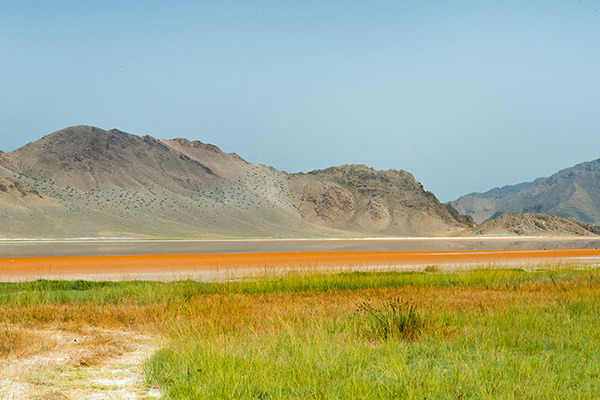
Protected Area of Agh Gol
Located in the northeast of Maku, this region has an area of about 90,000 hectares and its highest point is 2362 meters above sea level. Agh Gol region, due to its natural conditions, suitable vegetation and good life conditions, has long been the habitat of various species of wildlife, and in recent years, in order to revive extinct wildlife, a number of wild rams and ewes from Kaboudan Island in Urmia Lake were transported to this area.
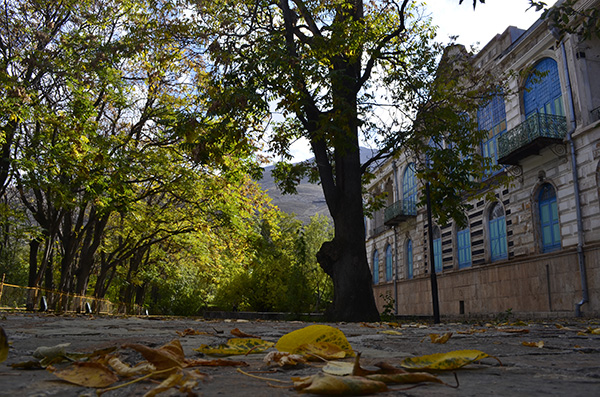
Baghcheh Joogh Palace
The Baghcheh Joogh Palace Museum is located two kilometers from Maku-Bazargan road in the village of Baghcheh Joogh. This palace was built in 1893 by the order of Iqbal-al-Saltanah Makuyi (one of the commanders of Mozaffar al-din Shah). Baghcheh Joogh Palace is a two-story building with a gabled roof in the middle of an 11-hectare garden, which has created an eye catching scene. In terms of applied materials and the type of doors and windows, it has its own style, which in addition to Iranian architecture, the influence of Western architecture is clearly evident. The paintings in the building, which have been drawn with great care and elegance on the interior of the ground and first floors, demonstrate the taste of the skilled craftsmen.
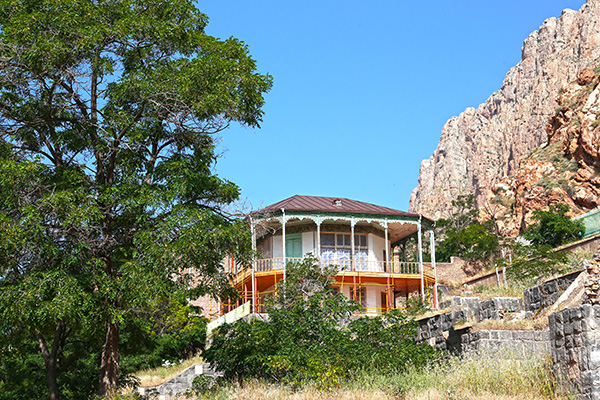
Maku Pergola( Kolah Farangi) Mansion
The pergola building is located on Taleghani Street in Maku and is part of a large complex belonging to Ali Qoli Khan Bayat Maku during the Qajar period and is like a jewel in the middle of Maku. This mansion is built on two floors with a gable roof and a regular octagonal design and has decorations, mirror work and paintings. The interior patterns of this building are in the shape of a cross; and have a balcony with twenty columns around itself.
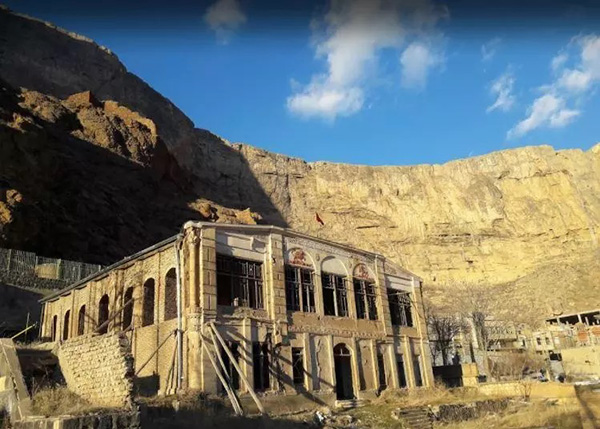
“Shir-o- Khorshid” Mansion
“Shir-o- Khorshid” building is located on Taleghani Street, next to the Pergola mansion, and belongs to a member of the Bayat Makoei family during the Qajar period. This building is also referred to as the Judicial Council of the City. This building has two floors and has beautiful wooden windows and plastering on the columns and facade of the building.
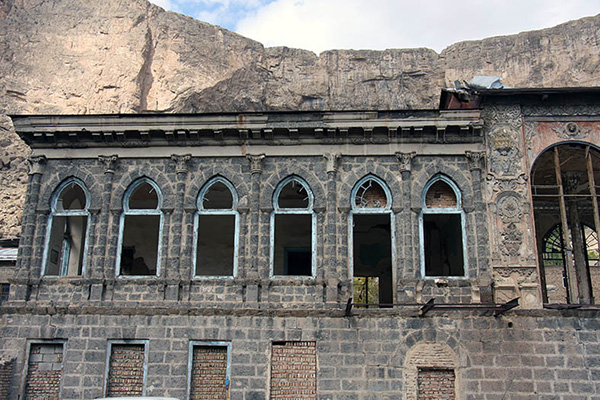
Melli Bank Building
This building belongs to Ahmad Khan Bayat Mako known as Afkham Al-Saltanah and was designed and built in the Qajar period in the middle of a large garden of about 2.5 hectares. It has been built on two floors with a rectangular plan and has been the residence of above mentioned family. Later, it was turned into an army hospital and continued for several years. After Maku was occupied by the Russians, it was used as a consulate. During the time of Prime Minister (Ghavam Al-Saltanah) when the Russians returned to their country, this building was used as Melli Bank of Maku branch and had continued until 1352.
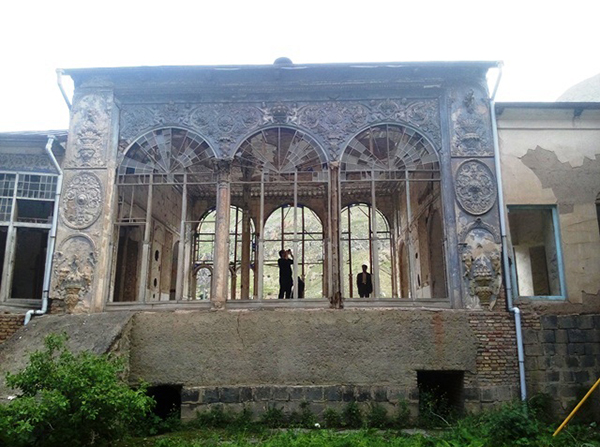
Shahrebani (Police) Building
This building is located on Imam Khomeini Street in Maku city and was built by one of Maku Khans, which was later purchased by the former police. The date of construction of this building is unknown. But according to the inscription in the Hall of Mirrors, its construction date is 1902. The old Maku police building is built on two floors. The first floor lacks decorations and large spaces. But on the second floor, in terms of general design, plan and lighting, reasonable divisions and architectural proportions, the presence of a mirror hall and large doors in the mirror hall and adjacent rooms with stained glass and plaster decorations of the exterior facade, including decorates, sculptures, shapes of flowers and plants, etc., have given great value to this building. The plan of the building almost induces the building form of the Bghcheh Joog Palace.
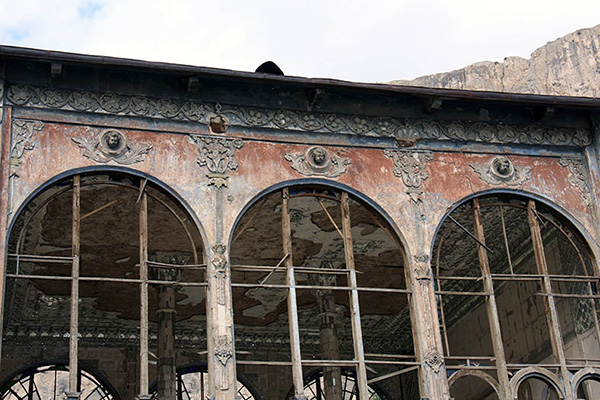
“Darayee” Building
“Darayee” Building belongs to the Qajar period and has been constructed in a garden-like space with dimensions of 80 to 50 in a rectangular shape on two floors and in a completely symmetrical shape. This building is located on the northwest side of Imam Street and, like other historical buildings in Maku, is built on a stone platform. The building is formed as a strip in the east-west direction and has two short protrusions of 2.7 meters on both sides of the northern part form the main entrances to the upper floor. The difference between the level of the north and south areas is 3.1 meters and the building is established on three levels.
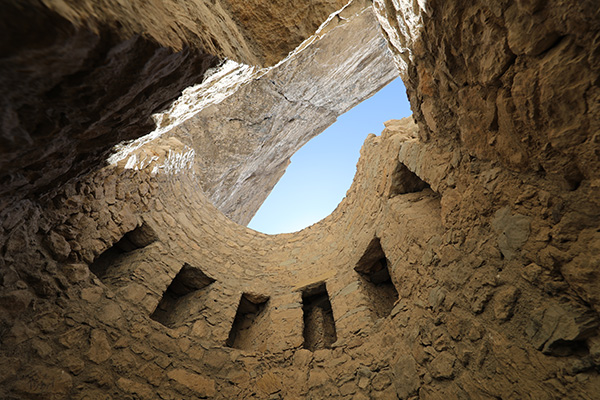
Qaban Castle
On the northwest side of the city of Maku, there is a rock with a very amazing and spectacular depression and protrusion, which is locally called Ghayeh. This unique rock, like a canopy, covers a large part, under which, historical monuments which is called a castle, lie. This castle is also surrounded by eye-catching and strong towers and fortifications that boost the strength and grandeur of the castle. Qaban Castle is one of the fascinating historical monuments of Maku and is located in the oldest part of Maku under a concave cliff overlooking this city. This area is the most beautiful and at the same time the scariest place that man can live. In the past, Qaban Castle was the main part of the city, which was located under a large stone cap with fences, tall towers and fortifications, military barracks and residential and service centers, and was inhabited during the Timurid, Safavid, Qajar and contemporary eras.
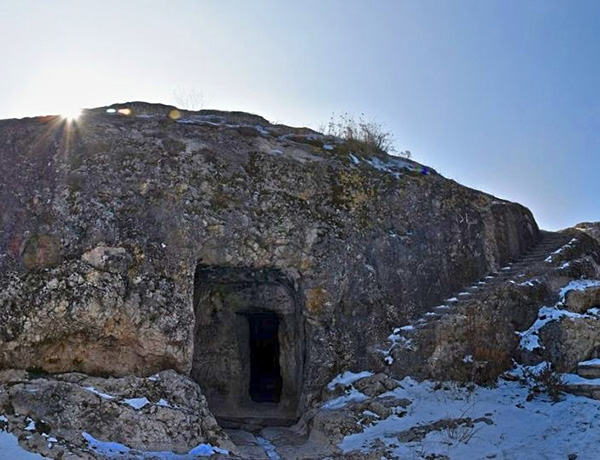
Eyvan-e Farhad (Farhad Roof)
It is located 7 km out of Maku, next to Maku-Bazargan road in Sangar village. This monument was built next to a historical fortress from the Urartu period and belongs to the seventh century BC. It includes a carved stone staircase connecting three rooms with outside. Adjacent to it and by the river is the altar of this ancient city.
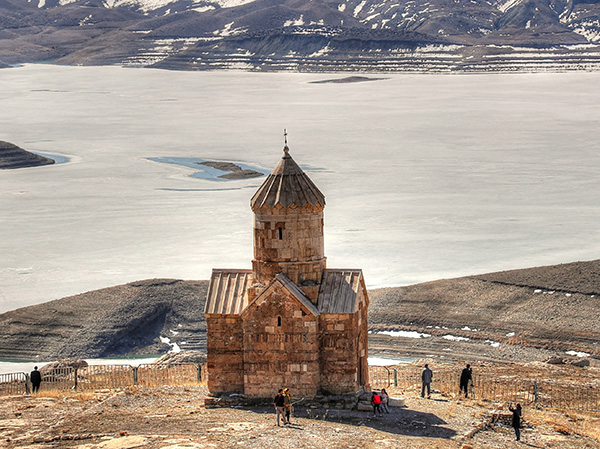
Zor Zor Church
Zor Zor Church is located 20 km from Maku, in the village of Baroon. This church consists of two old churches belonging to the seventh century and another church belonging to the 14th century, which was built on the old church. The building of this church was moved to a higher place, 600 meters from the main site, in 1988, due to the flooding of the Baroon Dam, with the preservation of architectural documents and the existing materials. Zor Zor Church is the only registered work of Maku Free Zone in the UNESCO World Heritage List.
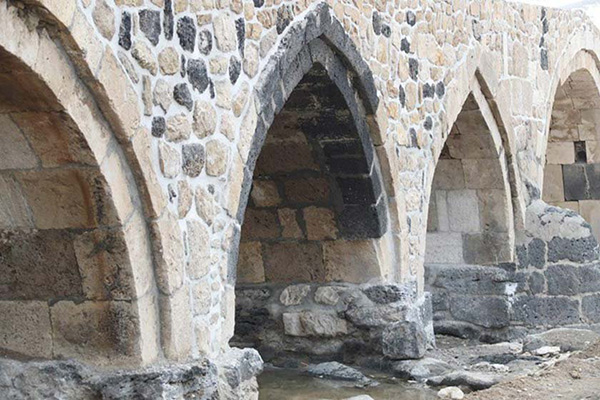
Beshgoz Bridge (Five Springs)
Beshgoz Bridge is located about one kilometer from Maku city. According to available sources, this bridge dates back to Safavid times. The overall dimensions are 51 meters length and 3.5 meters width. The length of the mouth of the big span is 7 meters and the smallest span is 4.5 meters and the thickness of the columns is 2 meters. In the construction of the bridge, clean cut stones have been used at the edges as well as the cover, and irregular stones have also been used to cover the surfaces.
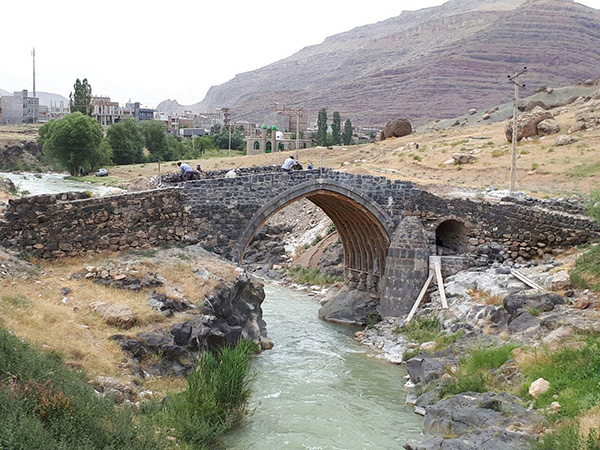
Gal-eh Joogh Bridge
This bridge is 10 meters long and 4.5 meters wide next to Qal-eh Joogh village and has been constructed to connect Qal-eh Joogh to Maku. Qala-eh Joogh Bridge consists of a large span and a small span, and the materials used in this bridge, like the Beshgooz Bridge in Maku, are made of stone and plaster. This bridge has no foundation due to its location on the rocky floor of the river, and in fact, the foundation of the bridge is based on a rocky floor.
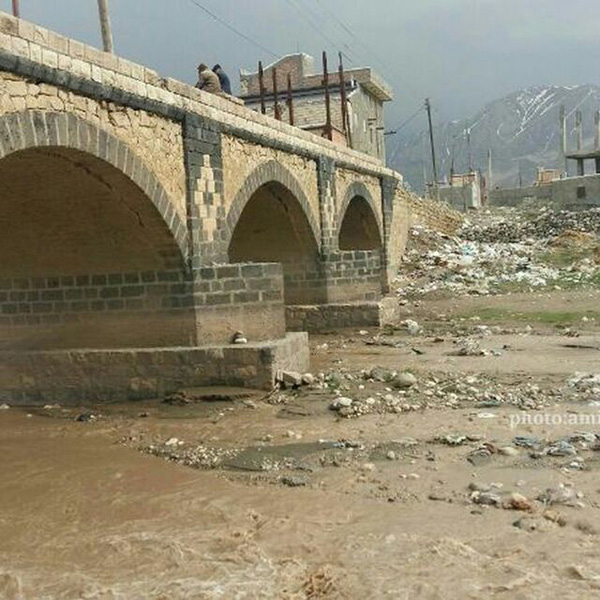
Keshmesh Tappeh Bridge
This bridge is located in Maku, near the village of Keshmesh Tappeh. The architecture of the Keshmesh Tappeh Bridge indicates that this work is related to the late Qajar and early Pahlavi periods. The bridge has three spans with low arches. Stone materials at the base of the bridge and bricks on the cover were used. The foundations of this bridge have curved breakers on both sides. In this bridge, black and white stones have been used to create decorations and these decorations have been placed along the bases of the bridge in the shape of a rhombus with white stones in the middle of the black frame and also black stones have been used at the edges of the arches.
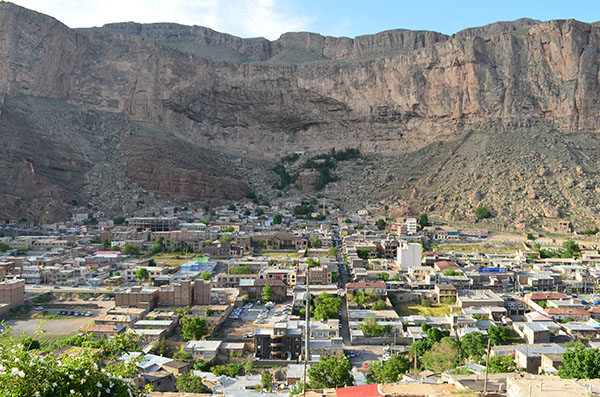
Maku Rocky Cliff
This huge stone cliff, approximately 7 km long, surrounds the city of Maku on the north side and has created a scary but very beautiful scene. The rocky cliff of Maku is one of the largest curved rocks in the world with an adverse gradient of 40 degrees, called Ghayeh, which is like an umbrella over the city of Maku. One of the historical inscriptions of Iran has been carved by the order of Shah Abbas Safavid on this huge rock.
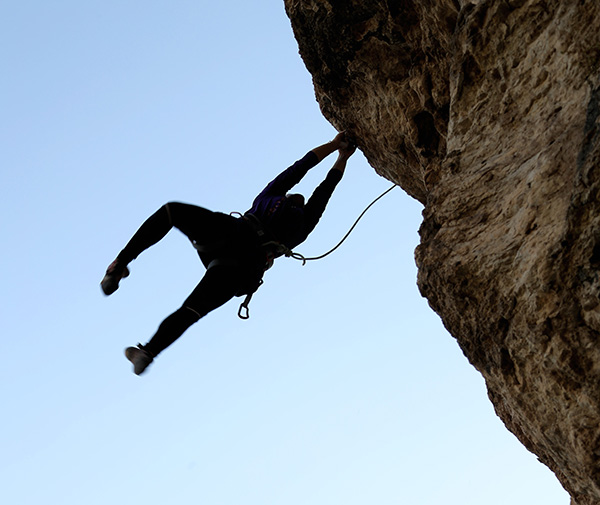
Rock Climbing in Maku Free Zone
Apart from its ancient and glorious history, Maku Free Zone has a unique feature that distinguishes it from other free zones in Iran, which is its rocky nature. Maku Free Zone has good attractions for rock climbers due to its huge steep cliffs (Cherkin mountains, Sabad Daghi, Qayeh, etc.) and is a very ideal place for regional, national and international rock tours and festivals.
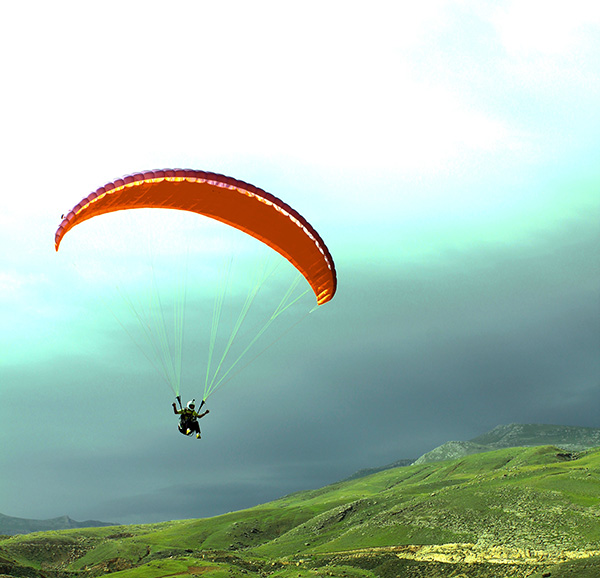
Recreational and Flying Sports (Paragliding) in Maku Free Zone
Maku Free Zone, due to its high altitudes, has a special potential for flying sports. Adventurous sports pros consider Maku Mountains a paradise for paragliding and other flying sports. Flying sites in Maku Free Zone in Qarah Khach tourism hub are located geographically so that access to paragliding take-off and landing area is in a short distance.
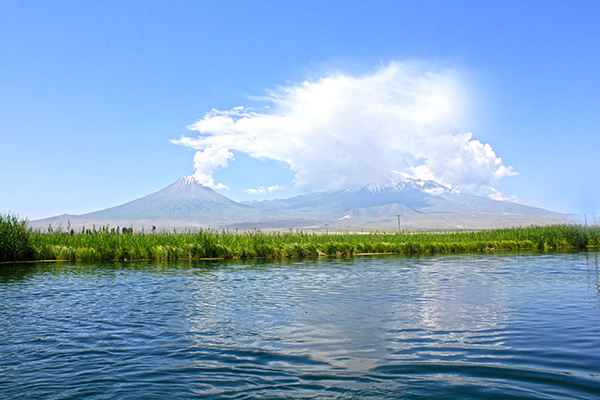
Cheshmeh Sorayya
Cheshmeh Sorayya is a large and spectacular spring located in the northernmost geographical point of Iran on the border of Iran and Turkey. Adjacency to the snow-capped mountains of Ararat in Turkey and the presence of numerous nomads and villages with different cultures and customs along the route of this spring, have converted this place to one of the eco-tourism hubs of Maku Free Zone.
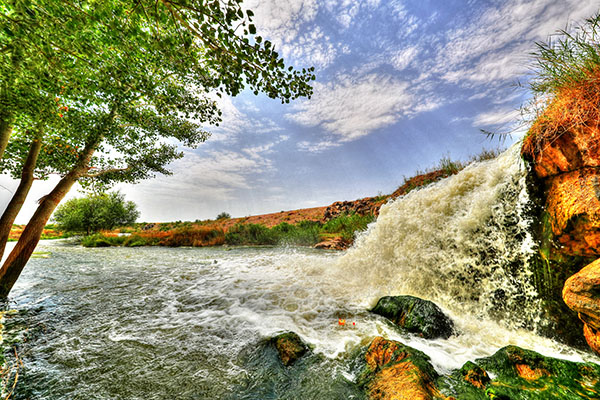
Su Daresi (Rend Valley)
Su Daresi, better known as the Rend Valley, is located north of Maku, along the village of Rend. The presence of a river full of water and vast fields and rocks has turned this place into a beautiful promenade with a pleasant climate.
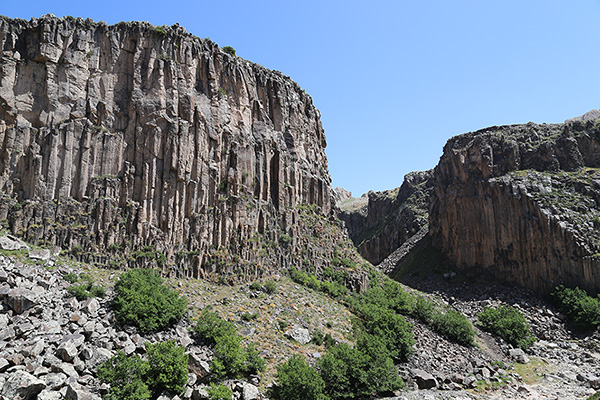
Basaltic Prisms
Maku Basaltic Prisms is located 25 km from Maku on Maku-Chaldoran road and is unique in the world because it was emerged as a result of the freezing of volcanic lava in the third geological period. In this zone, due to lava freezing shrinkage and tensile force in three directions parallel to the lava surface and igneous mass in the vertical direction has formed straight hexagonal columns.
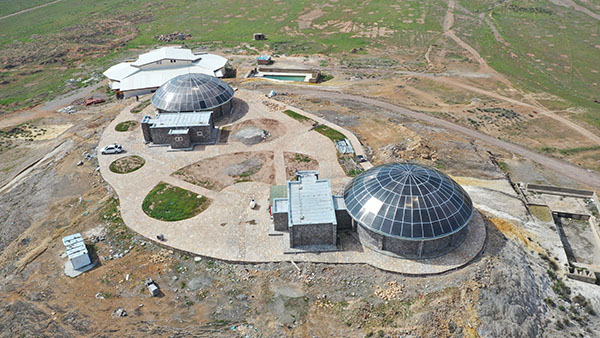
Showt Spa
Showt hot spring is located in a pleasant environment on the outskirts of Showt. It has two main springs, which are located at a 40 meters distance on a mound with different heights. The main manifestation of the spring is a natural pond in an irregular shape, which has created natural and interesting ponds due to the water deposition, and pools have been built on the ponds.
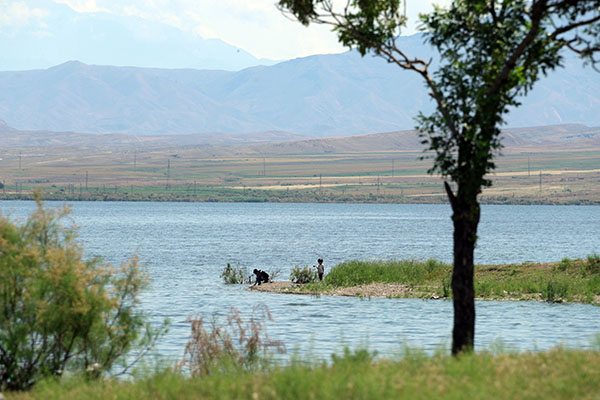
Aras Dam Lake
This lake, behind the Aras Dam, is located on the border of the Islamic Republic of Iran and the Republic of Nakhchivan. It is one of the lake shores in northwestern Iran. Aras Dam Lake is a home for migratory birds that migrate from northern Europe and Siberia in autumn and winter. Aras Camp promenade is located next to this lake.
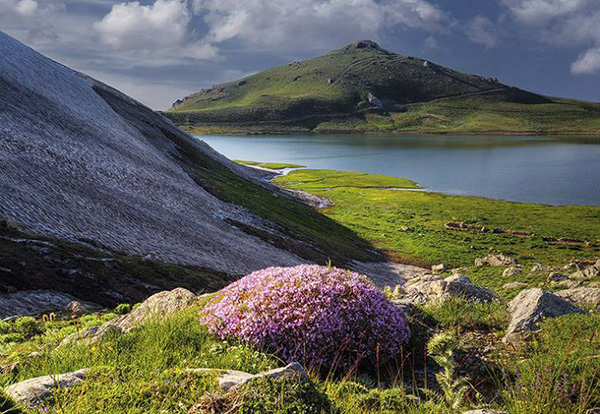
Boralan Wetland
The valuable Boralan wetland is located in the Ararat Mountains region on the Iranian-Turkish border. This border wetland originates from the joint border of Iran and Turkey on the south of Qarasu River north of Dem Gheshlagh village and extends along the border of Iran and Turkey to the area called Cheshmeh Sorayya which is the origin of Qarasu River. This wetland is home to various types of aquatic and coastal species and is one of the most beautiful natural attractions in the region that can be visited by nature lovers.
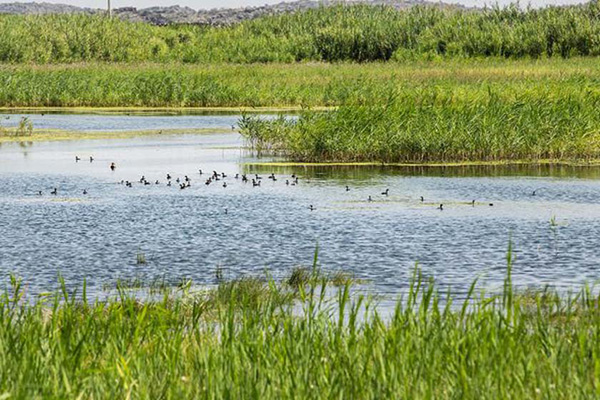
Yarim Qayeh Wetland
This border wetland is a vast reed between the two countries of Iran and Turkey, with an area of about 400 hectares. The distance from Maku is 23 km and from Bazargan is about 3 km. This wetland has rich vegetation. This wetland has rich vegetation and due to its location certain birds live in this habitat. Most of these birds are cranes that breed in this area and this can be the biggest factor of natural attraction.
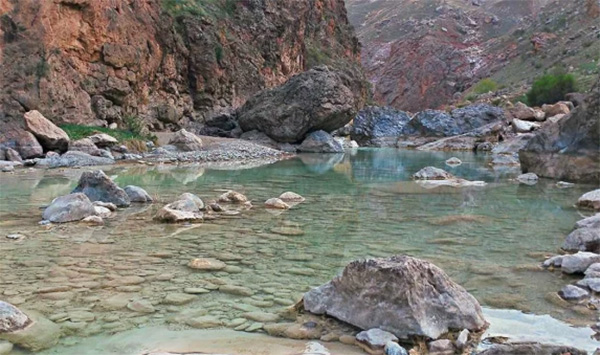
Qaleh Joogh Waterfall
Qaleh Joogh waterfall is located five kilometers southwest of Maku, on the outskirts of Qaleh Joogh village and in the middle of the beautiful Qaleh Jogh Mountains. The height of this waterfall is about 80 meters, and its location is very beautiful and easily accessible and its atmosphere remains completely pristine.
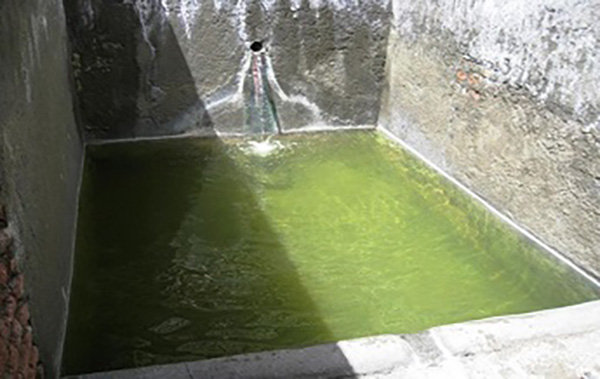
Bashkand Spa
Located 6 km from Bazargan road, Baskand Spa springs out of the ground on the road of Kelisakandi. Its rocks are calcareous and water comes out in several places along with gas. The water of this spring is used for bathing and as a pain relief.

Baroon Maku Dam
Baroon Dam is built on Zangmar River near Baroon village; and is one of the largest dams in Maku, which has beautiful scenery as well as a large lake conducive for fishing. Thanks to its location next to Zor Zor Church, Baroon Dam is visited by many tourists.

Protected Area of Agh Gol
Located in the northeast of Maku, this region has an area of about 90,000 hectares and its highest point is 2362 meters above sea level. Agh Gol region, due to its natural conditions, suitable vegetation and good life conditions, has long been the habitat of various species of wildlife, and in recent years, in order to revive extinct wildlife, a number of wild rams and ewes from Kaboudan Island in Urmia Lake were transported to this area.

Baghcheh Joogh Palace
The Baghcheh Joogh Palace Museum is located two kilometers from Maku-Bazargan road in the village of Baghcheh Joogh. This palace was built in 1893 by the order of Iqbal-al-Saltanah Makuyi (one of the commanders of Mozaffar al-din Shah). Baghcheh Joogh Palace is a two-story building with a gabled roof in the middle of an 11-hectare garden, which has created an eye catching scene. In terms of applied materials and the type of doors and windows, it has its own style, which in addition to Iranian architecture, the influence of Western architecture is clearly evident. The paintings in the building, which have been drawn with great care and elegance on the interior of the ground and first floors, demonstrate the taste of the skilled craftsmen.
مسیرهای پیشنهادی برای تورهای گردشگری
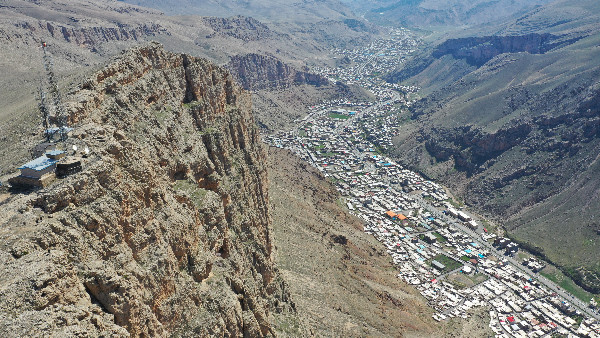
مسیر آفرود به بام ماکو
اگر بخواهید لذت دیدن تمامی زیبایی های ماکو را در یک قاب تجربه کنید می بایست به بلندترین کوه قیه به ارتفاع ۱۸۶۰ متر که به بام ماکو معروف است سری بزنید. یافتن آن بجهت وجود یک دکل مخابراتی بر روی آن کار ساده ای است. جهت دسترسی می توان از جاده خاکی ماکو- دانالود استفاده کرد که بعد از مسافتی کوتاه این جاده، آسفالته خواهد شد، دو دکل در سمت چپ و راست دیده می شود، این جاده آسفالته به دکل سمت چپ و جاده خاکی به دکل سمت راست یا بام ماکو می رسد. یادتان باشد جهت اجرای این برنامه بهتر است از اتومبیل های دو دیفرانسیل استفاده شود. اگر علاقمند به کوهپیمایی هم باشید می توانید در ابتدای جاده ماکو- دانالو بر روی اولین یال سمت راست بروید و در نهایت باعبور از چند شیب بلند و کوتاه و در مدت کمتر از ۲ ساعت خود را به بام ماکو برسانید.

تور کلیسای زر زر و دریاچه سد بارون
استان آذربایجان غربی، چندین کلیسای ثبت شده در یونسکو را در خود جای داده است، کلیسای زر زر یا ننه مریم یکی از همین کلیساهاست که داستان شنیدنی دارد. در کنار کلیسا می توان نمایی فوق العاده جذاب از دریاچه سد بارون را نیز مشاهده کرد.
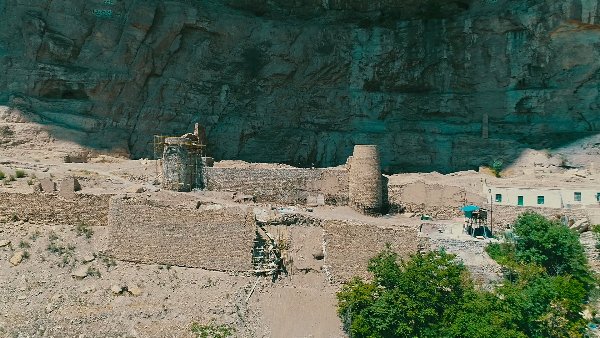
تور تاریخی شهر ماکو
در این تور یک روزه می خواهیم به ماکوی قدیم سفر کنیم. در آن روزهایی که ماکو به قلعه قدیمی اش خلاصه می شد. در این برنامه از کوه قیه در مرکز شهر ماکو، قلعه قبان، عمارت کلاه فرنگی، عمارت شیر و خورشید، پل قلعه جوق، کاخ سردار(در روستای باغچه جوق) و دخمه فرهاد بازدید و تاریخ ماکو را مرور خواهیم کرد.

تور بازدید از آبگرم شوط، کلیسا های ثبت شده یونسکو، چشمه ثریا و تالاب بورالان
روز اول: بازدید حرکت از آبگرم شوط و در ادامه به سمت قره کلیسا و بازدید از آنجا و سپس سد بارون و کلسیای زر رز و بعد از بازدید در نهایت اقامت در بوم گردی بارون.
روز دوم: صبح از روستای بارون به سمت منشورهای بازالتی حرکت کرده و پس از بازدید راهی چشمه ثریا و تالاب بورالان می شویم تا از مناظر زیبا و جذاب این مناطق لذت برده و سپس جهت قایق سواری به سوی تفرجگاه ارس حرکت خواهیم کرد.
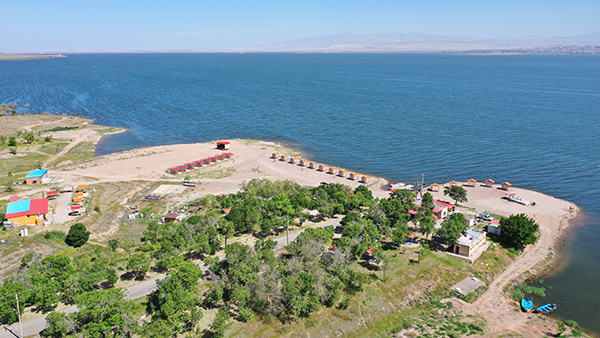
تور ارس گردی و قایق رانی در رودخانه بزرگ ارس
در این تور یک روزه که از شهرستان زیبای پلدشت آغاز می شود، متفاوت از سایر نقاط منطقه بوده و سرسبزی و طراوت را بهمراه دارد. رودخانه بزرگ ارس که مرز بین ایران و جمهوری نخجوان است، مسیر خوبی برای تفریح و ماهیگیری محسوب می شود. مناطق سرسبز حاشیه رود ارس که پل دوستی از روی آن عبور کرده و در امتداد ما را به کمپ تفریحی ارس می رساند. کمپ تفریحی ارس دارای ظرفیت قایق رانی، رستوران، سرویس بهداشتی، آلاچیق و ... است که در نزدیکی سد بزرگ ارس قرار دارد.
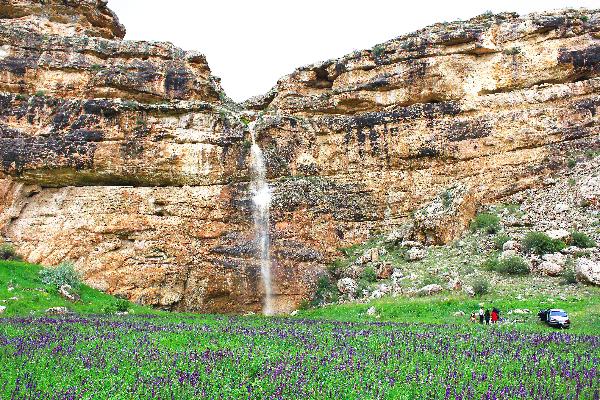
تور دره و آبشار رند
صبح از شهر ماکو راهی روستای رند خواهیم شد تا از دره و دیوارهای عظیم و بلند آن و نیز آبشار رند که با شدت فراوان بر روی تخته سنگ های پایین دست فرو میریزد دیدن کنیم، مدت زمان دسترسی به روستای رند از شهر ماکو فقط ۲۰ دقیقه به طول می انجامد. آبشار رند مابین روستا های رند و دانالو قرار گرفته و وجود جاده خاکی، مسیر دسترسی به آیشار را آسان کرده است. پس از ثبت خاطرات زیبا از این سفر کوتاه و صرف نهار در دامان طبیعت و استراحت می توان قبل از غروب خورشید به ماکو بازگشت.

تور چشمه ثریا و تالاب بورالان
اگر قصد سفر به یک مکان جذاب و هیجان انگیز را دارید باید برای یک بار هم که شده به نقطه صفر مرزی ایران و ترکیه سفری داشته باشید. چشمه ثریا یکی از سرچشمه های رود ارس و تالاب بورالان، یکی از تالاب های پر آبی است که هر ساله میزبان هزاران پرنده از کشورهای مجاور است. از این مکان می توان نمای زیبا از قلل کوچک و بزرگ آرارات را به نظاره نشست. در مسیر حرکت به سمت چشمه ثریا از پای دامنه کوه آرارات و از میان دشت بورالان عبور کرده و از طبیعت بکر و مناظر رنگارمگ روستاهای عشایری لذت خواهید برد.
Accommodation Units of Maku Free Zone
Accommodation Units
Maku International Airport





Bazars and Border Markets
Grand Border Market of Maku Free Zone

Omid Commercial Complex
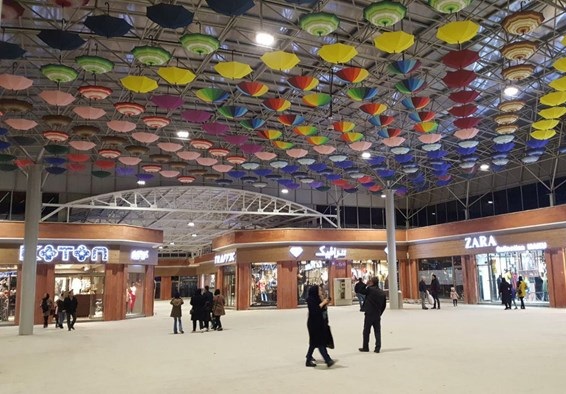
Joint Border Market of Sanam Bulaghi Poldasht

Call-Taxi Centers of Maku
Call-Taxi Centers
Maku Free Zone Handicrafts
Handicrafts are a collection of arts and crafts that are mainly made using natural and indigenous raw materials using hands and tools. The word handicrafts usually refers to traditional methods of making goods. These handicrafts are influenced by historical background, cultural features, geographical features, production place, social habits, traditional beliefs, indigenous and national aesthetic criteria, as well as artistic taste and individual creativity of the creator of the work. The handicrafts of Maku Free Zone, along with its tourist attractions, attract the attention of all travelers and tourists, and we want to introduce you to these beautiful works in this section. The handicrafts of Maku Free Zone have a unique variety and effect because they are a mixture of art and experience of the people of this zone.
Mat weaving is undoubtedly one of the oldest handicrafts and perhaps the most ancient one. Mat is the weaving of fibers from plant fibers, usually cane leaves, by hands and basic tools, during which various products such as mats, mat tablecloths, baskets, etc. are produced. Making mats by hand varies depending on the type of raw material available. In Maku Free Zone, fresh cane leaves are commonly used to make mats. Chigh weaving is also included in the mat weaving subset, with the difference that in the weaving process, in addition to plant fibers, dyed wool yarn is also used to create traditional patterns and designs. The skill and technique of mat weaving in Eshghabad village, located in Poldasht, has been registered under No. 388, in 2012, in the list of spiritual heritage of national works.
Rug is one type of ground cloth and cover among many handicrafts of people of Maku Free Zone. Rug is a very simple and basic carpet that does not use knots in its texture. It is called simple or double sided rug and weaving method is used for its production. These rugss are less thick compared to other types. The design of the double sided rugs is the same, and finally, both sides (back and front) can be used. The rug, in its traditional form, is commonly used to cover floors, walls, or bedspreads, but is now also purchased as a modern cover for houses. The most important places of rug weaving are the villages of Maku Free Zone, which due to their design and color have special features.
Maku Free Zone, as an ancient and historical part of Iran, has had various fields of handicrafts. One of the most important handicrafts of Maku Free Zone is the hand-woven carpets and rugs of this region, which has a special place among the hand-woven carpets produced due to its brilliant background.
It is a type of the decorative sewing and one of the original arts of Iran. The applied materials were made of gold and silver at the emergence of this art, however over time, due to its high cost; raw materials have been replaced by synthetic materials. In the past, this sewing was used to decorate clothes, luxurious curtains of halls, bedspreads, etc. however today it is used on tablecloths, bedspreads, rugs, prayer mat, Quran covers, tissue boxes and paintings. Out of different fields of traditional embroidery among others, tapestry, sequin and forty-piece embroidery, can be mentioned.
Carving precious and semi-precious stones with special tools and equipment to be used in ornaments, decorative utensils and various decorative objects is another field of handicrafts. The raw stones come from the mines and are cut after considering the pattern or design. They are carved with an electric lathe. After giving the desired shape to the stone, it is polished and placed in ornaments such as rings, necklaces, bracelets and earrings. Research has also been done on the healing properties of stones, which makes this art flourish.
Pottery is in fact the first artistic and industrial product of early humans and the result of human needs and reason in using the elements of nature. Its raw materials include: soil, water and fire that are found in human habitats. Pottery is a universal art that shows us not only the taste of the inventor, but also certain signs of social life and spiritual characteristics of the producer.
Wood inlay is the art of carving various designs on wood. In the region of West Azerbaijan, no one knows exactly when the art of woodcarving was formed and what stages it went through to reach its current state of development, but what is certain is that the history of woodcarving in this region is not separate from the history of wood consumption. Usually, woodcarvers use different types of wood that have a smooth surface, such as: walnut, pear, elm, mulberry, hornbeam and maple wood for interior decoration, and this is due to the abundance of these woods in this area. It is more important to use walnut wood due to its high quality (ability to be sawn, grated and varnished, etc.). The most important final product in the region is inlaid arm and back of sofas, decorative panels, etc.
Marquetry on wood is the creation of different patterns and designs that are created by placing wood next to each other and is of two types: Embossed and Flat Marquetry. In embossed, the desired pattern is placed above the wood surface and then its surrounding is decorated, but in flat, the desired pattern is first placed on the wood surface and the design is carved out and then the created holes are filled with colored wood or shells. The design of marquetry paintings includes Arabesque traceries, Khatayi, Shahnameh themes, miniatures of famous painters and other images.
Manufacturing musical instruments has been common in the area for many years, given that most of its makers are fully acquainted with music and playing it. Artists often choose the raw material of these instruments from mulberry and walnut wood, which are a product of the region itself, and personally undertake all the steps to make it based on existing patterns. Applying the personal taste of the creator in making some of the decorations of the instruments catches the eye of every viewer.
Maku Free Zone has its own special cuisine due to the very rich medicinal and food plants and various vegetables that grow in the area. A variety of foods, hot drinks made with herbs, local dishes have been cooked in the area. The temperate climate has led to the growth of hundreds of medicinal and food plants in the region, which can be traced in all traditional local cuisine.
Since ancient times, indigenous games have been an integral part of rural areas. In Maku Free Zone, indigenous games were played that may differ in name from other parts of the country, which are being revived today. Qayish Qayish, Hulu Qaydeh, Khastakin, Haft Sang, horse riding and shooting are some of the local games.
Introducing Border Customs of Maku Free Zone
Bazargan Customs
Located in Maku Free Zone, Bazargan Customs is one of the largest passenger customs in Iran, which forms the border between Iran and Turkey. This customs was built in 1926, and is the only 24-hour-open international border between Iran and Turkey. From Turkish side it is called Gorbulaq.
Bazargan border is the most important land customs of the country and is considered as the gateway to Europe, where hundreds of domestic and foreign travelers and hundreds of transit trucks and passengers cross and pass through this city daily.
The customs is currently operating under a general manager and provides various customs services, including passenger, import, export, transit and judiciary. Poldasht customs and Sari Su and Sanam Bolaghi bazaars act under the management of Bazargan customs. This customs also has two separate, cargo and passenger entrances.
Bazargan Customs
Located in Maku Free Zone, Bazargan Customs is one of the largest passenger customs in Iran, which forms the border between Iran and Turkey. This customs was built in 1926, and is the only 24-hour-open international border between Iran and Turkey. From Turkish side it is called Gorbulaq.
Bazargan border is the most important land customs of the country and is considered as the gateway to Europe, where hundreds of domestic and foreign travelers and hundreds of transit trucks and passengers cross and pass through this city daily.
The customs is currently operating under a general manager and provides various customs services, including passenger, import, export, transit and judiciary. Poldasht customs and Sari Su and Sanam Bolaghi bazaars act under the management of Bazargan customs. This customs also has two separate, cargo and passenger entrances.
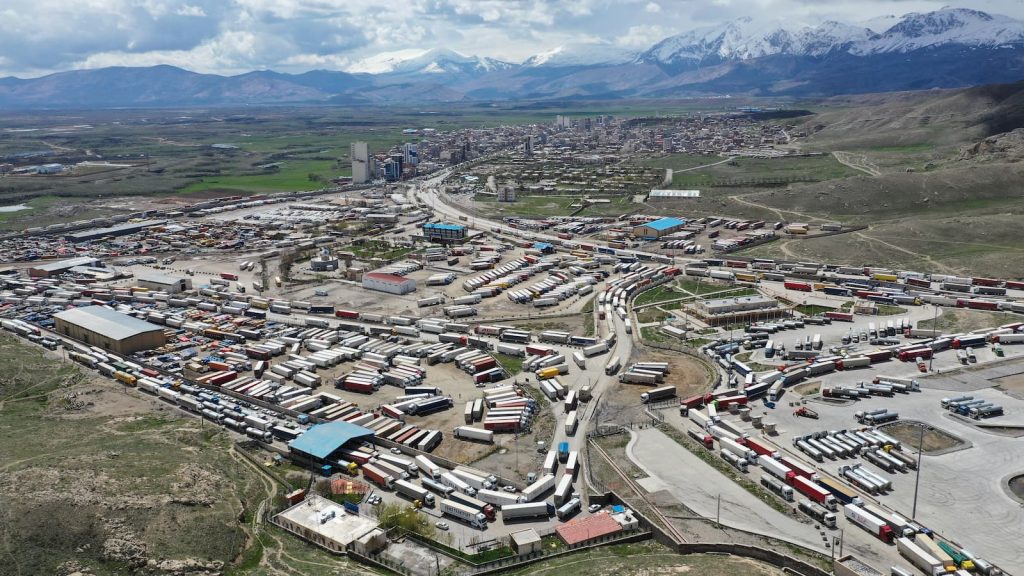
Poldasht Customs
Poldasht is one of the border cities of West Azerbaijan province in the northwest of Iran and close to Aras River. This city is the political and administrative center of Poldasht city. Poldasht is located between Shibloo and Zanganeh plains. You can easily see “Shahtakhti” and even the buildings of Nakhchivan Autonomous Republic from Poldasht. People of the two neighboring cities (Poldasht and Nakhchivan) have various social ties and cultural relations and are considered as one of the gateways of the Islamic Republic of Iran to the Republic of Azerbaijan.
Poldasht-Shah Takhti Bridge on the border of Iran and Nakhchivan Autonomous Republic as “Friendship Bridge” was opened in 2007. The two sides of the border are connected through this bridge.
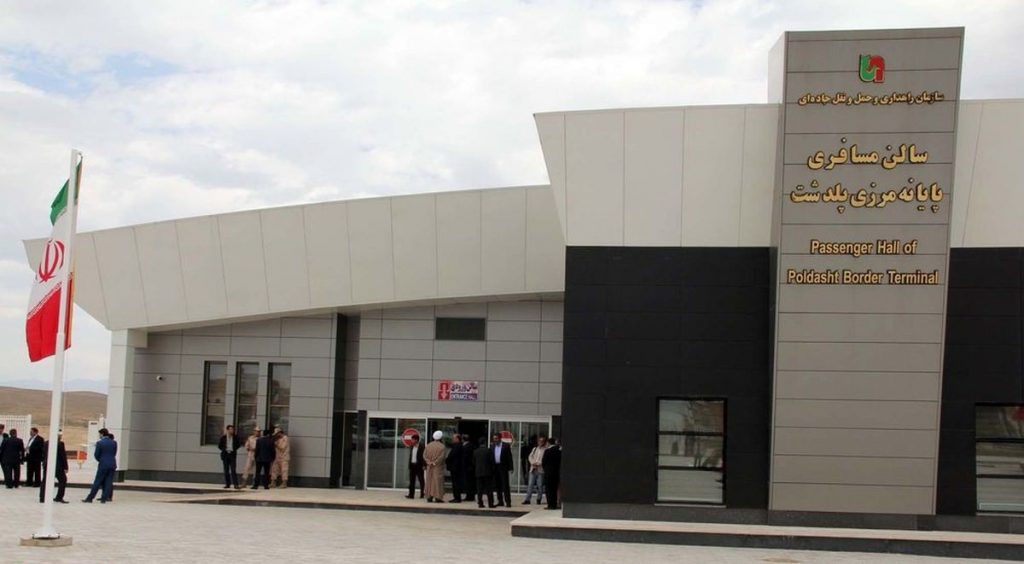
Poldasht Customs
Poldasht is one of the border cities of West Azerbaijan province in the northwest of Iran and close to Aras River. This city is the political and administrative center of Poldasht city. Poldasht is located between Shibloo and Zanganeh plains. You can easily see “Shahtakhti” and even the buildings of Nakhchivan Autonomous Republic from Poldasht. People of the two neighboring cities (Poldasht and Nakhchivan) have various social ties and cultural relations and are considered as one of the gateways of the Islamic Republic of Iran to the Republic of Azerbaijan.
Poldasht-Shah Takhti Bridge on the border of Iran and Nakhchivan Autonomous Republic as “Friendship Bridge” was opened in 2007. The two sides of the border are connected through this bridge.
جشنواره ماکوگرام سال ۱۳۹۷
جشنواره گردشگری و سفرنگاری با عنوان «ماکوگرام» با هدف معرفی ظرفیتهای گردشگری و سرمایهگذاری ماکو به همت سازمان منطقه آزاد ماکو، برگزار شد. این جشنواره با یک فراخوان برای علاقمندانی که روایتگر سفرهای خود بودند و آنچه را که میبینند و حس می کنند به رشته تحریر در میآورند، در قاب دوربین جای میدهند و ثبت میکنند برای مسافران آینده، برگزار شد. هدف از برگزاری این جشنواره شناسایی و معرفی ظرفیتهای گردشگری منطقه آزاد ماکو از طریق ابزارهای فضای مجازی بود. این جشنواره رقابت بین بزرگان سفرنگاری ایران در فضای مجازی و شبکههای اجتماعی بود که در مدت یک هفته ماکو را به دنیا نشان دهد و برای این کار از ابزارهای رایج کمک گرفته شد.
جشنواره گردشگری و سفرنگاری با عنوان “ماکوگرام” با حضور ۶۰ نفر از فعالان گردشگری و خبرنگاران گردشگری و میراث فرهنگی که از بین ۲۵۸ نفر شرکت کننده انتخاب شده بودند در تاریخ ۸ مرداد ۹۷ با هدف معرفی ظرفیت های گردشگری ماکو و فراهم سازی زمینه معرفی منطقه در عرصه های ملی و بین المللی، گسترش بوم گردی و ایجاد اقامتگاه های بومی، فراهم سازی امکانت رفاهی و گردشگری، ایجاد و توسعه برندینگ برای منطقه آزاد ماکو آغاز به کار کرد و در تاریخ ۱۲ مرداد ۹۷ با معرفی نفرات برتر به کار خود پایان داد.
سفرنگارها هر روز و در طول گشت و گذار خود در گوش چپ گربه ایران از طبیعت، تاریخ، آداب و رسوم، خوراک و مردم روایت کرده و با ثبت عکس، فیلم، تصاویر زنده و … این خطه از کشور را به مخاطبان خود معرفی میکردند. گردشگری الکترونیک این امکان را فراهم آورد که ظرفیتها و پتانسیل های موجود در منطقه آزاد ماکو به بازارهای هدف گردشگری معرفی شد. مستندسازی از ظرفیت های موجود در صنعت گردشگری و نیز اقدامات صورت گرفته در مسیر توسعه منطقه آزاد ماکو با رویکرد جامع نگری در جشنواره ماکوگرام مورد تاکید بود.
در این جشنواره بیش از یک هزار عکس و فیلم جهت معرفی ظرفیت ها، جذابیت ها و آداب و رسوم منطقه آزاد ماکو تولید ومنتشر شد.
Urgent Phone Numbers
Pharmacies and Medical Centers
Offices’ Phone Numbers
Banks of Maku Free Zone
Pharmacies and Medical Centers
Urgent Phone Numbers
Banks of Maku Free Zone
Offices’ Phone Numbers
All Rights Reserved to Maku Free Zone Organization.
